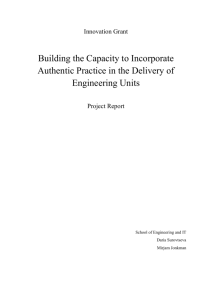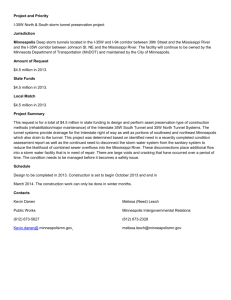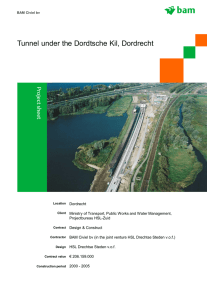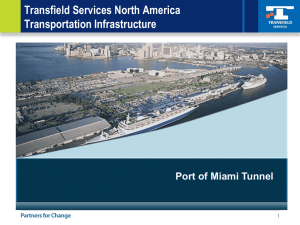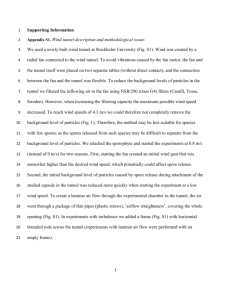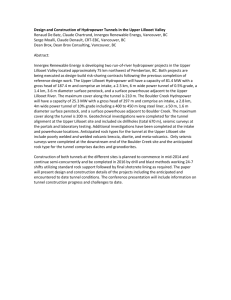The 80 Year Old Treated Water Tunnel in Toronto
advertisement
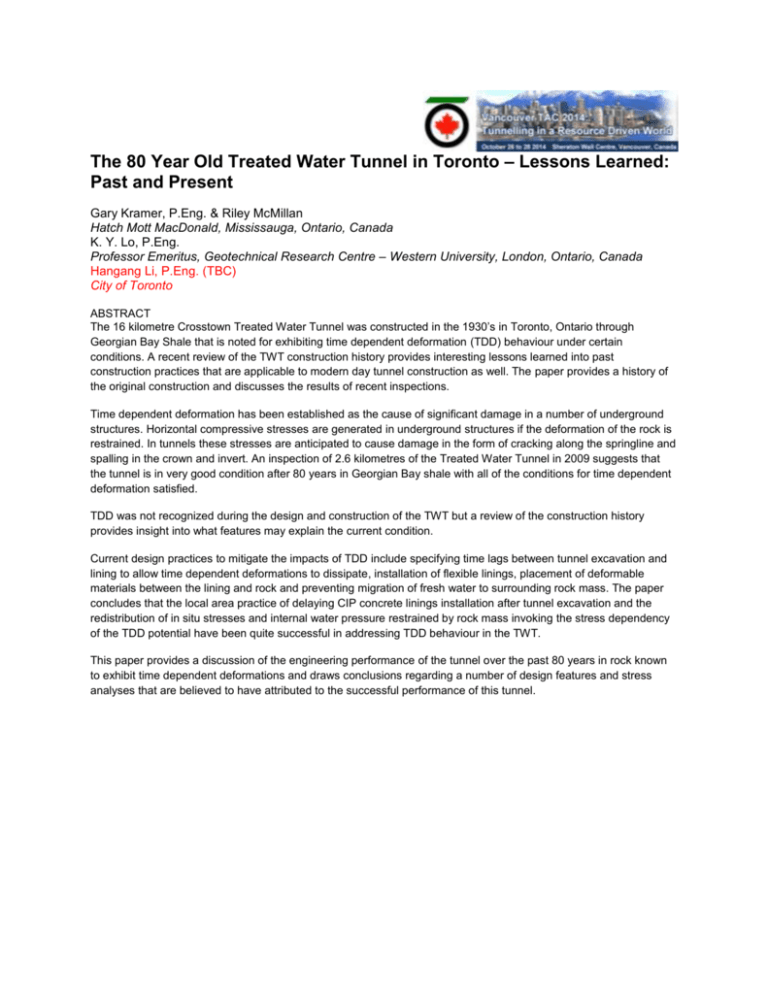
The 80 Year Old Treated Water Tunnel in Toronto – Lessons Learned: Past and Present Gary Kramer, P.Eng. & Riley McMillan Hatch Mott MacDonald, Mississauga, Ontario, Canada K. Y. Lo, P.Eng. Professor Emeritus, Geotechnical Research Centre – Western University, London, Ontario, Canada Hangang Li, P.Eng. (TBC) City of Toronto ABSTRACT The 16 kilometre Crosstown Treated Water Tunnel was constructed in the 1930’s in Toronto, Ontario through Georgian Bay Shale that is noted for exhibiting time dependent deformation (TDD) behaviour under certain conditions. A recent review of the TWT construction history provides interesting lessons learned into past construction practices that are applicable to modern day tunnel construction as well. The paper provides a history of the original construction and discusses the results of recent inspections. Time dependent deformation has been established as the cause of significant damage in a number of underground structures. Horizontal compressive stresses are generated in underground structures if the deformation of the rock is restrained. In tunnels these stresses are anticipated to cause damage in the form of cracking along the springline and spalling in the crown and invert. An inspection of 2.6 kilometres of the Treated Water Tunnel in 2009 suggests that the tunnel is in very good condition after 80 years in Georgian Bay shale with all of the conditions for time dependent deformation satisfied. TDD was not recognized during the design and construction of the TWT but a review of the construction history provides insight into what features may explain the current condition. Current design practices to mitigate the impacts of TDD include specifying time lags between tunnel excavation and lining to allow time dependent deformations to dissipate, installation of flexible linings, placement of deformable materials between the lining and rock and preventing migration of fresh water to surrounding rock mass. The paper concludes that the local area practice of delaying CIP concrete linings installation after tunnel excavation and the redistribution of in situ stresses and internal water pressure restrained by rock mass invoking the stress dependency of the TDD potential have been quite successful in addressing TDD behaviour in the TWT. This paper provides a discussion of the engineering performance of the tunnel over the past 80 years in rock known to exhibit time dependent deformations and draws conclusions regarding a number of design features and stress analyses that are believed to have attributed to the successful performance of this tunnel.



